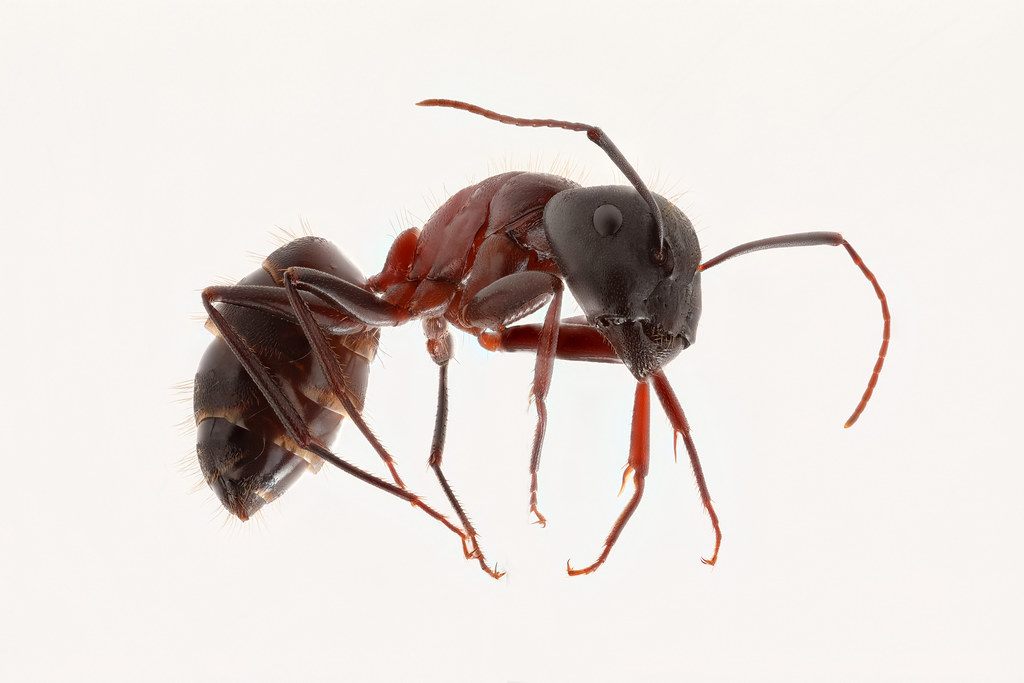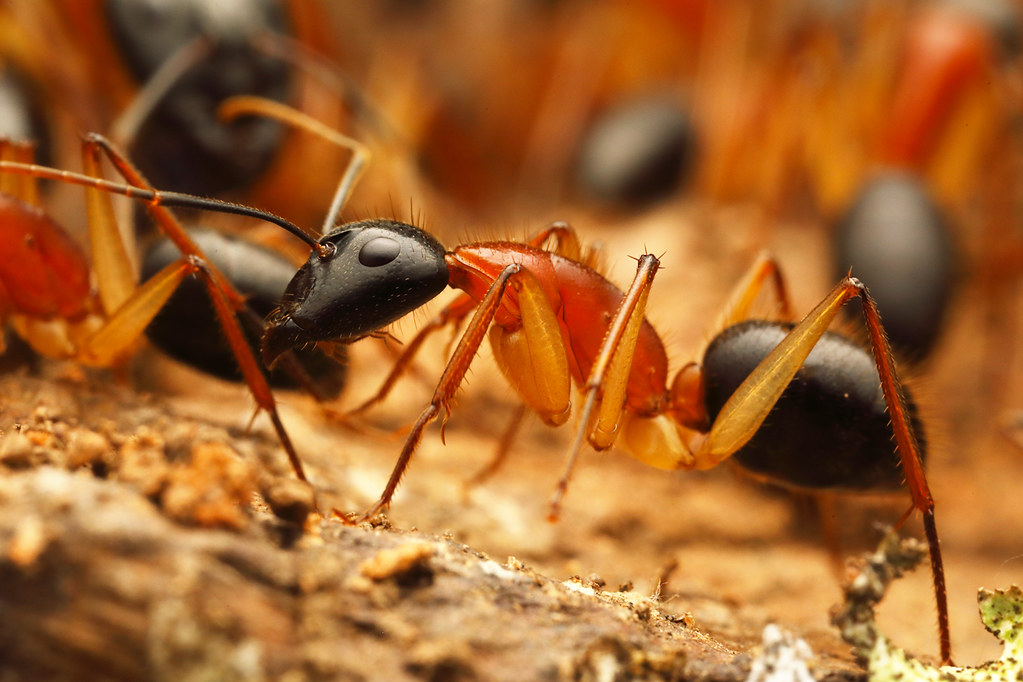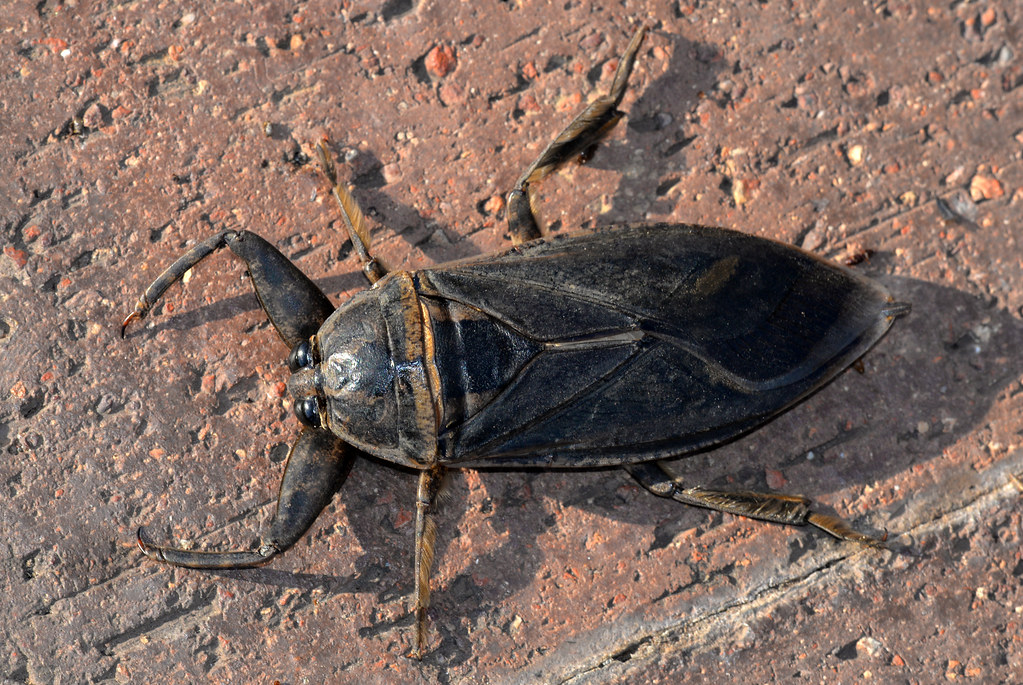Sugar ants and carpenter ants are both species of ants that can be found in North America. Both sugar ants and carpenter ants can be a nuisance to homeowners, as they are attracted to sweet food and can damage the wood. However, there are some critical differences between these two types of ants.
For one, sugar ants are much smaller than carpenter ants. Sugar ants also have a more elongated body shape, while carpenter ants have a more cylindrical body shape. Additionally, carpenter ants can damage wood, thanks to their strong jaws. On the other hand, sugar ants do not have this ability and primarily feed on sugary substances.
Finally, another difference between these two types of ants is their nesting habits. Carpenter ant nests are typically located in damp or rotting wood, while sugar ant nests tend to be located in open spaces like cracks in walls or under rocks.
What Are Sugar Ants?
Sugar ants are a type of ant that is attracted to sweets. They are small and can be a nuisance in your home if they get into your food. Sugar ants are not harmful to humans but can be a nuisance. If you have sugar ants in your home, you can do a few things to get rid of them.
What Are Carpenter Ants?

Carpenter ants are one of the most common types of ants found in North America. They get their name from their nesting habits, as they often build their nests by excavating wood.
While carpenter ants do not typically sting or bite humans, they can be a nuisance because of the damage they can cause to buildings and other structures. Carpenter ants are attracted to sweet substances like honeydew and nectar, so they may also be found near aphids and other plant-sucking insects.
What Is the Difference Between Sugar Ants and Carpenter Ants?
Sugar ants are small, black or brown ants attracted to sweets. They are commonly found in kitchens and pantries and can be a nuisance if not controlled. Carpenter ants are bigger than sugar ants and are black or red in color.
They build their nests in wood, so they can often be found in homes or other buildings. Carpenter ants can cause damage to structures if left unchecked.
How Can You Get Rid of Sugar Ants?
You can do a few things to get rid of sugar ants.
- First, try to find the source of the problem and eliminate it. This may mean getting rid of any food sources the ants are attracted to.
- Secondly, you can try using a natural ant killer like diatomaceous earth or boric acid.
- Finally, you can also set up physical barriers like caulking or dusting with powdered sugar to keep the ants from entering your home in the first place.
Why Are Sugar Ants a Problem?
Sugar ants are a problem because they are attracted to sweets and other sugary substances. This can lead them into homes and other buildings, where they will then try to find food sources.
Sugar ants can also contaminate food with their saliva and feces, which can cause illness in humans.
How to Get Rid of Carpenter Ants
Carpenter ants are one of the most common types of ants that people have to deal with. They get their name from their habit of tunneling into the wood to build their nests.

Carpenter ants are attracted to damp or rotting wood, so they can often be found in kitchens and bathrooms. If you have carpenter ants in your home, here are some tips on how to get rid of them:
1. Find the nest. Carpenter ants will usually build their nests in damp or rotten wood. Inspect your home for any areas where there is water damage or decay. You’re most likely to find carpenter ant nests in these places.
2. Remove the food source. Once you’ve located the nest, try to remove whatever is attracting the carpenter ants to that area. This might mean fixing a leaky pipe or removing excess moisture in your kitchen or bathroom.
3. Use bait traps. Another way to get rid of carpenter ants is by using bait traps.
4. Try a natural insecticide. If you don’t want to use chemical insecticides, some natural options can be effective against carpenter ants. These include diatomaceous earth and boric acid.
5. Call an exterminator. If you’re finding it difficult to get rid of the carpenter ants, you may need to call in a professional exterminator. Exterminators will access more powerful pesticides that can effectively eliminate carpenter ant colonies.
How Much Does Carpenter Ant Treatment Cost
Carpenter ants are one of the most destructive types of ants. They cause millions of dollars in damage every year to homes and businesses. The good news is that carpenter ant treatment is inexpensive and can prevent extensive damage to your property.
The average cost for carpenter ant treatment is $200-$300. This includes the cost of materials and labor. However, the exact cost will vary depending on the infestation size and the damage’s extent. If you have a small infestation, you may be able to get away with treating it yourself. However, if you have a large infestation or significant damage, you must hire a professional exterminator.
Carpenter ant treatment typically involves spraying an insecticide around the perimeter of your home or business. This will kill any Carpenter ants that come into contact with it. You may also need to treat inside your home if there is evidence of an indoor nest. If you have a severe infestation, you may need to fumigate your entire home or business to eliminate the problem.
While carpenter ant treatment can be costly, it is nothing compared to the damage they can cause. By taking care of the problem early, you can save thousands of dollars in repairs down the road.
Carpenter Ants Infestation
These wood-destroying insects can cause significant damage to your home if left untreated. An infestation of carpenter ants can be challenging to control, so you must call a professional pest control company as soon as you notice signs of these pests in your home.
The first step in controlling a carpenter ant infestation is finding the problem’s source. Carpenter ants typically nest in moist, rotted wood, so you’ll need to look for evidence of water damage or decay in your home. Once you’ve found the source of the problem, you can begin treating it with an insecticide designed specifically for carpenter ants.
If you have a carpenter ant infestation, you must act quickly to prevent further damage to your home. Call a professional pest control company today for expert advice on how to get rid of carpenter ants!
Carpenter Ant Frass
Carpenter ants are wood-destroying pests that can cause significant damage to your home if left unchecked. One of the telltale signs of a carpenter ant infestation is the presence of carpenter ant frass. This sawdust-like material is composed of bits of wood and other debris that carpenter ants have excavated from their nests within your walls, ceilings, or floors. If you see piles of carpenter ant frass around your home, it’s time to call a professional pest control company to eliminate these destructive insects.
While carpenter ant frass may look like harmless sawdust, it can cause severe damage to your property. If left untreated, carpenter ants will continue to tunnel through your wood framing, weakening the structural integrity of your home. In extreme cases, this could lead to a collapse. In addition, the presence of carpenter ant frass can attract other pests, such as termites, which can further damage your property.
If you suspect you have a carpenter ant infestation, you must call in a professional pest control company immediately. A trained exterminator will be able to quickly identify the source of the problem and develop a treatment plan to get rid of the ants and prevent them from returning in the future.
Conclusion
In conclusion, sugar ants and carpenter ants are two different types of ants that can be a problem for homeowners. If you have sugar ants in your home, you can do a few things to get rid of them.
One way to get rid of sugar ants is to mix sugar and baking soda in equal parts and put them in a bowl. The sugar will attract the ants, and the baking soda will kill them. Another way to get rid of sugar ants is to put out small vinegar or soapy water dishes. The vinegar or soapy water will kill the ants when they try to drink it.
Carpenter ants are more difficult to get rid of than sugar ants. If you have carpenter ants in your home, you should call an exterminator. Carpenter ants can damage wood, so getting rid of them as soon as possible is essential.
FAQ
Where Do Carpenter Ants Come from
Carpenter ants are one of the most common types of ants found in North America. They get their name from their habit of making their nests in wood. Carpenter ants can cause much damage to buildings and structures if they are left unchecked.
Carpenter ants are usually black, although some species can be red or brown. They are relatively large ants, with workers ranging in size from 3/8 to 1/2 inches long. Carpenter ants have a distinctly different shape than other ants, with a narrow waist and ample head and thorax.
Carpenter ants are attracted to wet wood, which is why they are often found in kitchens and bathrooms. Suppose you suspect you have a carpenter ant infestation. In that case, contacting a pest control professional as soon as possible is essential to get rid of them before they cause severe damage to your home or business.
When Are Carpenter Ants Active
Carpenter ants are most active at night and drawn to light sources. They are also attracted to sweet substances, such as honeydew from aphids or syrup.
For this reason, carpenter ants are often seen near windowsills or crawling on fruits or sugary foods left out. Carpenter ants travel long distances searching for food and are especially fond of proteins, such as meats and insects.
If you see carpenter ants during the day, it is likely because they have been disturbed from their nest and are now exploring their surroundings.
Carpenter Ants vs. Sugar Ants
While carpenter and sugar ants may seem similar at first glance, there are a few key differences between them. For one, carpenter ants are much more giant than sugar ants, measuring about ¼ to ½ an inch long.
Sugar ants, on the other hand, are only about ⅛ of an inch long. The size difference is because carpenter ants can tunnel through wood and create their nests inside of trees or houses, while sugar ants can only build their nests in cracks or crevices.
Another critical difference between these two types of ants is their diet. Carpenter ants primarily eat other insects, while sugar ants feed on sweet substances like honeydew (a sugary excretion from aphids) or nectar.
This diet difference is reflected in the shape of their mouths; carpenter ant mouths are designed for chewing, while sugar mouths have a long slender tube that helps them suck up liquid food sources.
Finally, carpenter ants and sugar ants also differ in their reproductive habits. Male and female carpenter ants mate during nuptial flights (large swarms of flying male and female carpenter ants that happen at certain times of the year), after which the males die, and the females return to their nests to start new colonies.
Sugar ant colonies typically consist of one queen who does all the reproducing; when she dies, the colony dies with her since there are no other reproductive individuals.
Are Carpenter Ants Dangerous
Carpenter ants are one of the most common species of ants found in North America. While they are not known to be dangerous to humans, they can cause significant damage to buildings and structures. Carpenter ants get their name from their ability to tunnel into wood and create their nests. This nesting behavior often leads them into homes and other buildings, where they can do extensive damage if left unchecked.
Control of carpenter ants typically begins with an inspection to identify the locations of ant colonies and potential entry points into a structure. Once these have been identified, baits and traps can be used to eliminate the existing population and prevent future infestations. In some cases, insecticides may also be necessary for complete control. It is always best to consult with a professional pest management company for severe infestations or those that are difficult to control.
Where Do Carpenter Ants Go in the Winter
People often wonder what carpenter ants do in the winter. Do they die? Do they hibernate? The answer is a little bit of both. Carpenter ants do not survive the cold weather like some other insects. However, they don’t precisely hibernate either.
When the temperature drops in the fall, carpenter ants start to look for a warm place to spend the winter, this is usually indoors, where it is warm and dry. They will try to find their way into your home through any cracks or crevices they can find. Once inside, they will build nests out of wood shavings and live there until spring arrives.
During this time, the carpenter ants will be relatively inactive. They won’t go out looking for food very often, and they certainly won’t be doing any damage to your home. You probably won’t see them unless you look for them. So if you find a few carpenter ants wandering around your house in the middle of winter, don’t panic! They’re just trying to stay alive until spring comes back around again.
How Much Is Carpenter Ant Treatment
Carpenter ants are one of the most common household pests in North America. These hardy insects can survive in various climates and environments, which is why they are so difficult to control. If you have carpenter ants in your home, it is essential to seek professional pest control services as soon as possible. While several do-it-yourself treatments are available, these often prove ineffective against carpenter ants. Only professional pest control companies have the tools and experience necessary to eliminate these pests properly.
The cost of carpenter ant treatment will vary depending on the severity of the infestation and the size of your home. Generally, you can expect to pay between $100 and $300 for treatment. However, if the infestation is widespread or your home is large, you may pay more for treatment. In some cases, carpenter ant treatment can cost upwards of $1,000.
If you have carpenter ants in your home, don’t hesitate to call a professional pest control company for help. While the cost of treatment may be high, it pales compared to the damage these pests can cause if left unchecked.
Carpenter Ant Termite Droppings
Carpenter ants and termites both leave behind droppings that can be a nuisance. The carpenter ant’s droppings are small and black, while the termite’s droppings are larger and brown. Both types of droppings can be found where these pests are active.
Carpenter ant droppings may not seem like much of a problem, but they can be harmful. The small black pellets can quickly become airborne and inhaled, leading to respiratory problems. In addition, the carpenter ant’s droppings can also attract other pests, such as cockroaches and silverfish.
Termite droppings are even more problematic than carpenter ant droppings. These large brown pellets are not only unsightly, but they can also cause structural damage to your home. Termites feed on wood, so their droppings contain bits of wood that can weaken the foundation or framing of your house over time. In addition, termite droppings often contain harmful chemicals that can be toxic to humans and animals.
Carpenter Ants in Bathroom
Carpenter ants are one of the most common household pests in North America. These hardy little insects are adept at invading homes and setting up shop, often without being noticed. One of the most common places for carpenter ants to set up a nest is in bathrooms, where they can access both food and water sources.
There are several things that you can do to prevent carpenter ants from taking over your bathroom:
- Ensure they have no food source by keeping the area clean and free of crumbs or spilled liquids.
- Caulk any cracks or holes in the walls or floor that might provide an entry point for these pests.
- Consider investing in a pesticide to help keep these insects at bay.







